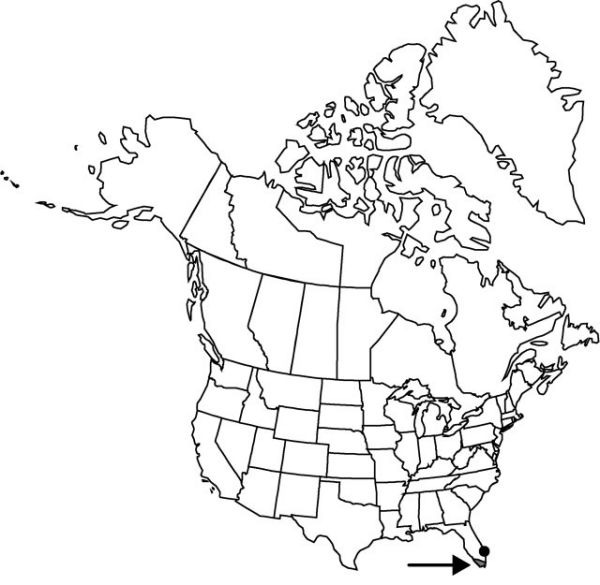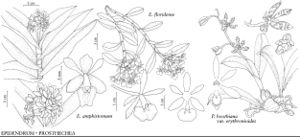Prosthechea boothiana var. erythronioides
N. Amer. Native Orchid J. 5: 18. 1999.
Plants to 30 dm. Stems: pseudobulbs aggregate, suborbicular, strongly flattened, 2.5–3.8 × 1–3 cm, smooth, glossy. Leaves 1–3, oblanceolate, 6–18 × 1–3.5 cm, apex obtuse to acute. Inflorescences racemes, to 25 cm; sheath conduplicate, elongate. Flowers 12, resupinate, simultaneous, greenish tan with reddish purple blotches; sepals oblanceolate, 1–1.4 × 3–3.5 mm, apex acute; petals similar, somewhat smaller, 1–1.3 × 1–2 mm; lip white to pale green, occasionally marked with magenta, rhombic to obscurely 3-lobed, 10 × 6–7 mm, lateral margins revolute; callus 3-dentate, middle tooth extended into thickened termination near apex of lip; anthers 3, middle anther with 4 pollinia, laterals with 2 each, yellow; column green at base, white distally, apex 3-toothed with smaller tooth in each sinus, 6–7 mm. Capsules 2.5–3 × 1.5–2 cm.
Phenology: Flowering Jul–Sep; fruiting Nov–Dec or throughout year.
Habitat: In hammocks and thickets, on small trees
Elevation: 0–30 m
Distribution

Fla., West Indies (Bahamas)
Discussion
The autogamous, 3-anthered Prosthechea boothiana var. erythronioides is the only variety found in Florida, probably because of the absence of a pollinator. Throughout the rest of the distribution of the species, the 3-anthered plants seldom occur. As most other autogamous tropical orchids in Florida, it has been able to survive there only because of the self-pollinating feature. The 1-anthered variety, var. boothiana, occurs in Cuba, Bahamas, Mexico, and Belize.
Selected References
None.
